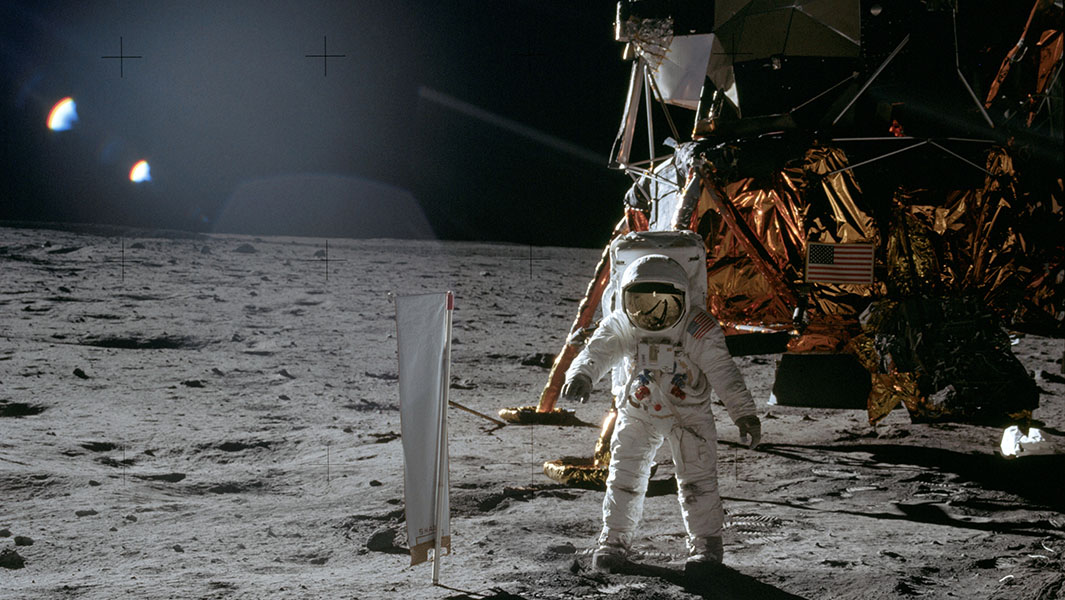Remembering Apollo 11 on the Moon landing 50th anniversary

Fifty years ago this week, the crew of Apollo 11 – Neil Armstrong, Buzz Aldrin and Michael Collins – blasted off from the Kennedy Space Center on Merritt Island, Florida, on their historic, and record-breaking, mission to the moon.

After a complicated four-day journey involving four major manoeuvring burns and the in-orbit docking of the lunar module and command module, Neil Armstrong and Buzz Aldrin landed the Eagle lunar module at 4:17 p.m. on 20 July 1969, becoming the first men on the Moon. Some six hours later, at 10:56 p.m., Armstrong stepped off the lunar module’s ladder and onto the Moon’s surface to take humanity’s historic first steps on another celestial body.
The first human outpost on the moon was short-lived – just 21 hours and 36 minutes elapsed between landing and departure – but it made a lasting impression (literally, the astronauts’ footprints are still visible in the 2012 Lunar Reconnaissance Orbiter picture below). The live feed of Armstrong and Aldrin walking on the surface of the moon watched by what was at the time the largest TV audience ever (around one fifth of the world’s population).

The time that Armstrong and Aldrin spent on the moon represented the crowning achievement of an almost incomprehensibly massive and complex technological undertaking that had begun almost a decade earlier. Achieving the seemingly impossible goal of putting a man on the moon required NASA’s engineers to attempt things never tried before, breaking dozens of records in the process.
In the years leading up to the Apollo 11 mission, NASA had achieved the first docking and first spacewalk between two spacecraft, built the single largest and most powerful rocket (records that still stand today), and carried out the first crewed trans-lunar spaceflight. On the way, NASA’s astronauts also chalked up achievements as diverse as the first selfie in open space, the first song played in space and the first food smuggled into space.
While this was the culmination of years of planning and effort, it was also just the beginning in many ways. Five further successful missions (plus the “successful failure” of Apollo 13) were launched over the following three years.
In later moon missions astronauts progressed from Armstrong and Aldrin’s tentative steps to wide-ranging geological research trips aided by a flat-pack electric car called the Lunar Roving Vehicle (which with reported max speed of 18 km/h, still holds the moon-speed record). The longest manned Moon mission, Apollo 17 (commander Eugene Cernan pictured below), involved 22 hours of moonwalks, spread out over a three-day stay on the surface.

The Apollo astronauts collected 382 kg (842 lb) of moon rocks, including the largest rock returned from space – an 11.7 kg (25 lb) block known as “Big Muley”. The observations of the Apollo astronauts, and the samples they returned, have been a vital resource for earth-bound scientists. Apollo program data or samples have been used in close to 3,000 scientific papers, and researchers continue to make discoveries in the trove of information.
The astronauts also discovered that moon dust stains everything and smells like gunpowder, which is perhaps not a scientifically important revelation, but fascinating all the same.


